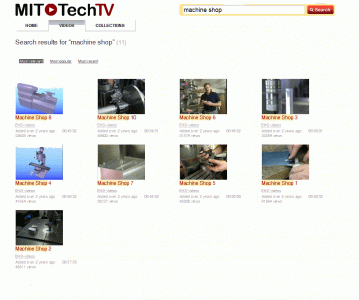I appreciate your comments. Thanks. Some are things that irked me, too.
Pete link=topic=256.msg2745#msg2745 date=1295067846 said:
-Buffing wheels set up and used in the same areas as the grinders. Airborn grinding dust WILL contaminate that buffing wheel, Why try to polsh parts with a contaminated wheel? Your wasting your time.
Yes, and also using one buffing wheel for multiple polish grits. A buffing wheel is only going to produce a finish equal to the coarsest grit in the wheel. And your right, if the coarsest grit is the junk from the nearby grinding wheel, that's what it's going to produce.
Pete link=topic=256.msg2745#msg2745 date=1295067846 said:
-He say's drill presses drill very accurate holes.Depending on the defination of accurate, In machinist terms, drilled holes are not very round, on size or even all that straight. If you want a fairly accurate hole then reaming is required. Better yet you drill the hole, Single point bore it to get it round and straight and then ream it for size. Were not even talking about what some industrys use for real high precision. Drills are very efficient at metal removal but their not real accurate.
Lots of issues. I wouldn't want the quill extended like that one is. Minimize extension to increase accuracy - the same reasons a milling machine is recommended for more precise drilling, but you covered that below. Some will probably argue that a keyless chuck may be less accurate than a keyed chuck.
Pete link=topic=256.msg2745#msg2745 date=1295067846 said:
-I certainly wouldn't use a pair of dial calipers to scribe parts. Scribes cost a few bucks. Good 6" dial calipers can cost $100 or more. Would you buy a Ferarri to haul gravel? Your just putting wear and tear on those dial calipers doing that.
Yes, I was shocked at that. There are calipers for doing that, but not that type. Divider style calipers, for instance.
Pete link=topic=256.msg2745#msg2745 date=1295067846 said:
-While showing the X.Y table no mention was made about using the table axis locks. If your depending on the leadscrews to provide accuracy and hold the table in position then your mistaken. All leadscrews have backlash. Those table locks would be a lot better than the leadscrew.
I'm not sure what's the bigger "oops" - drilling into the table, or drilling into the vise. I guess I learned to use a lot more sacraficial material (like wood or scrap metal) to protect the equipment.
Thanks for taking the time to share your thoughts.
- Arved
Extreme Newbie ;D
 View attachment 101999
View attachment 101999 View attachment 101999
View attachment 101999
